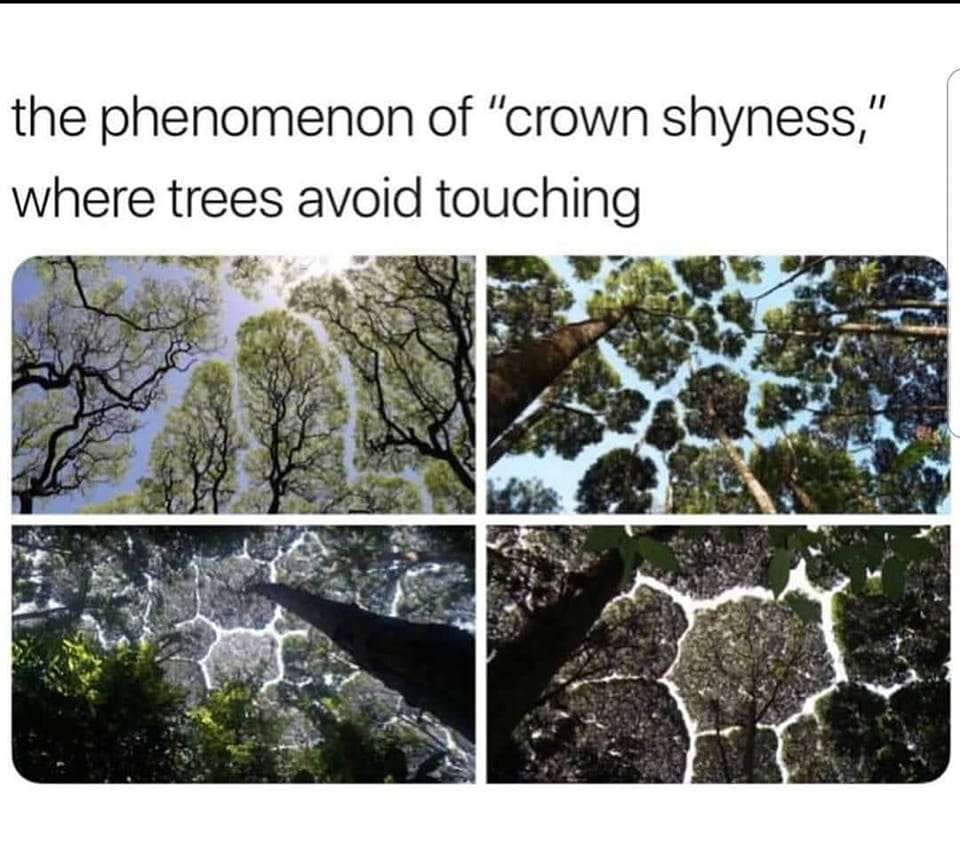
Crown shyness is a phenomenon that occurs in certain tree species in which the uppermost branches do not touch or overlap with each other, leaving gaps or channels between them.
This results in a distinctive pattern of gaps or channels in the canopy, or “crown,” of the forest.
The phenomenon is most commonly observed in eucalyptus, pine, and some oak and maple species.
The cause of crown shyness is unknown, but it is thought to be caused by a combination of factors, including the amount of sunlight and moisture available to the tree, as well as mechanical stresses caused by wind and other environmental factors.
According to one theory, the gaps caused by crown shyness allow for better light penetration into the forest understorey, resulting in a more diverse range of habitats for other plants and animals.
Another theory is that the gaps help to reduce pest and disease spread between trees.
Crown shyness is a natural occurrence that is not caused by human intervention or tree damage.
While the precise mechanisms underlying it are still unknown, the pattern of crown shyness is an intriguing example of the complex interactions between trees and their environment.
Read More:
01. Some trees may ‘social distance’ to avoid disease
02. Crown shyness: are trees social distancing too?
.jpg)
.jpg)
.jpg)
.jpg)
.jpg)
.jpg)
.jpg)
.jpg)
.jpg)
.jpg)
.jpg)
.jpg)
.jpg)
.jpg)
.jpg)
.jpg)
.jpg)
.jpg)
.jpg)
.jpg)
.jpg)
.jpg)
.jpg)
.jpg)
.jpg)
.jpg)
.jpg)

GIPHY App Key not set. Please check settings